FAQ vs How-To vs Playbook: Which Gets Cited More?
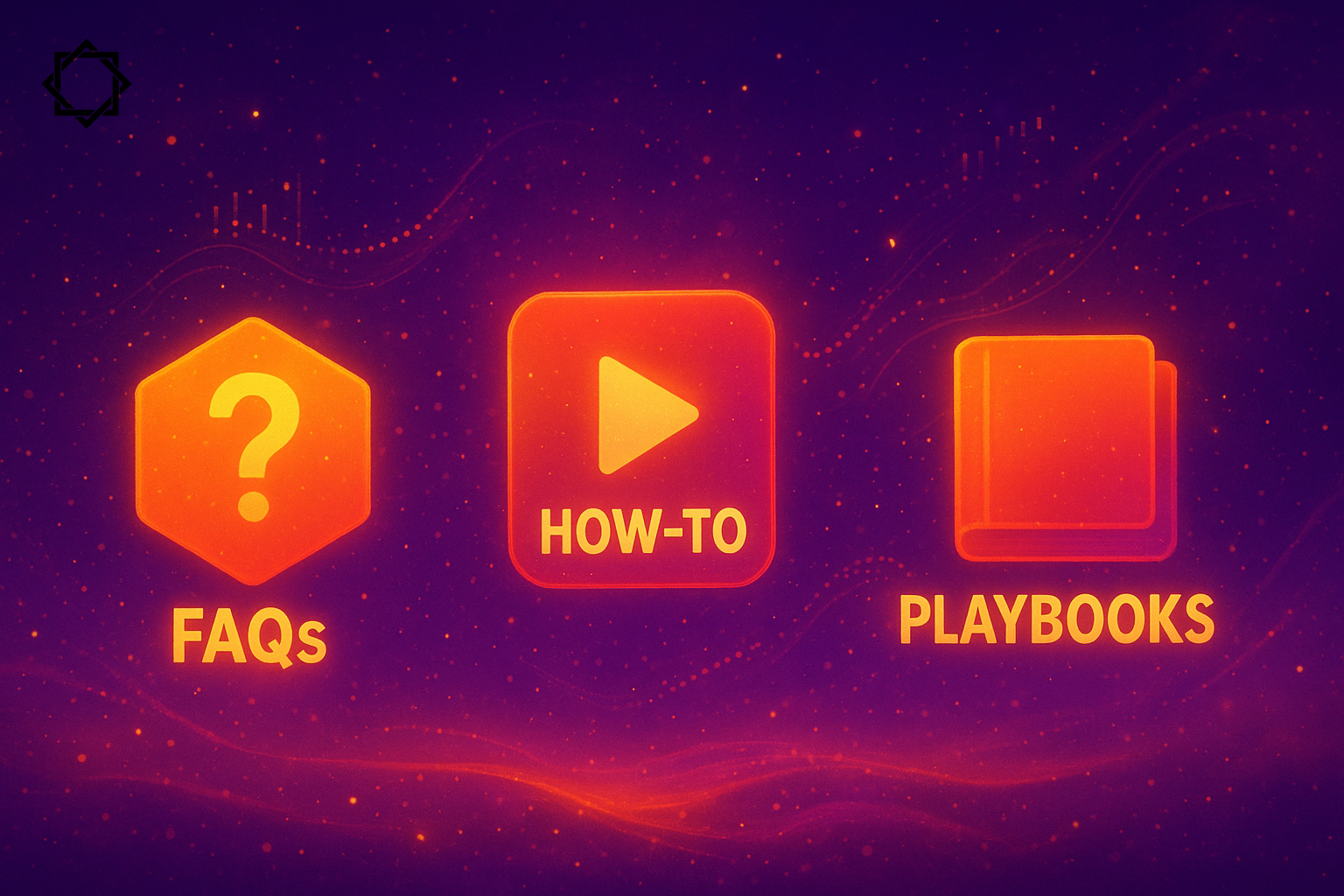
Summary (TL;DR)
How-To guides are cited more frequently than FAQ and Playbook content in digital marketing, SEO, and product documentation. This is driven by their actionable, search-optimized structures and step-by-step value for link acquisition and knowledge referencing. FAQs excel for surface-level questions and quick answers but rarely attract external links outside branded resources. Playbooks are rich, strategic blueprints but earn fewer citations due to their specificity, complexity, and lower search intent. For consultants aiming to maximize link equity and thought leadership, prioritizing How-To guides delivers the best ROI, especially when integrated into broader knowledge architectures.
---
Introduction
Among marketers, SEOs, and documentation publishers, the debate around FAQ, How-To, and Playbook content is more than academic—it’s pivotal for ROI. Client questions often boil down to: Which format earns more backlinks? Drives greater authority? Ranks for intent-driven queries? This article dissects citation frequency across these formats, drawing from studies, industry benchmarks, and practical examples. We'll deliver actionable insights so you can confidently recommend the best content types for both ranking and reputation.
---
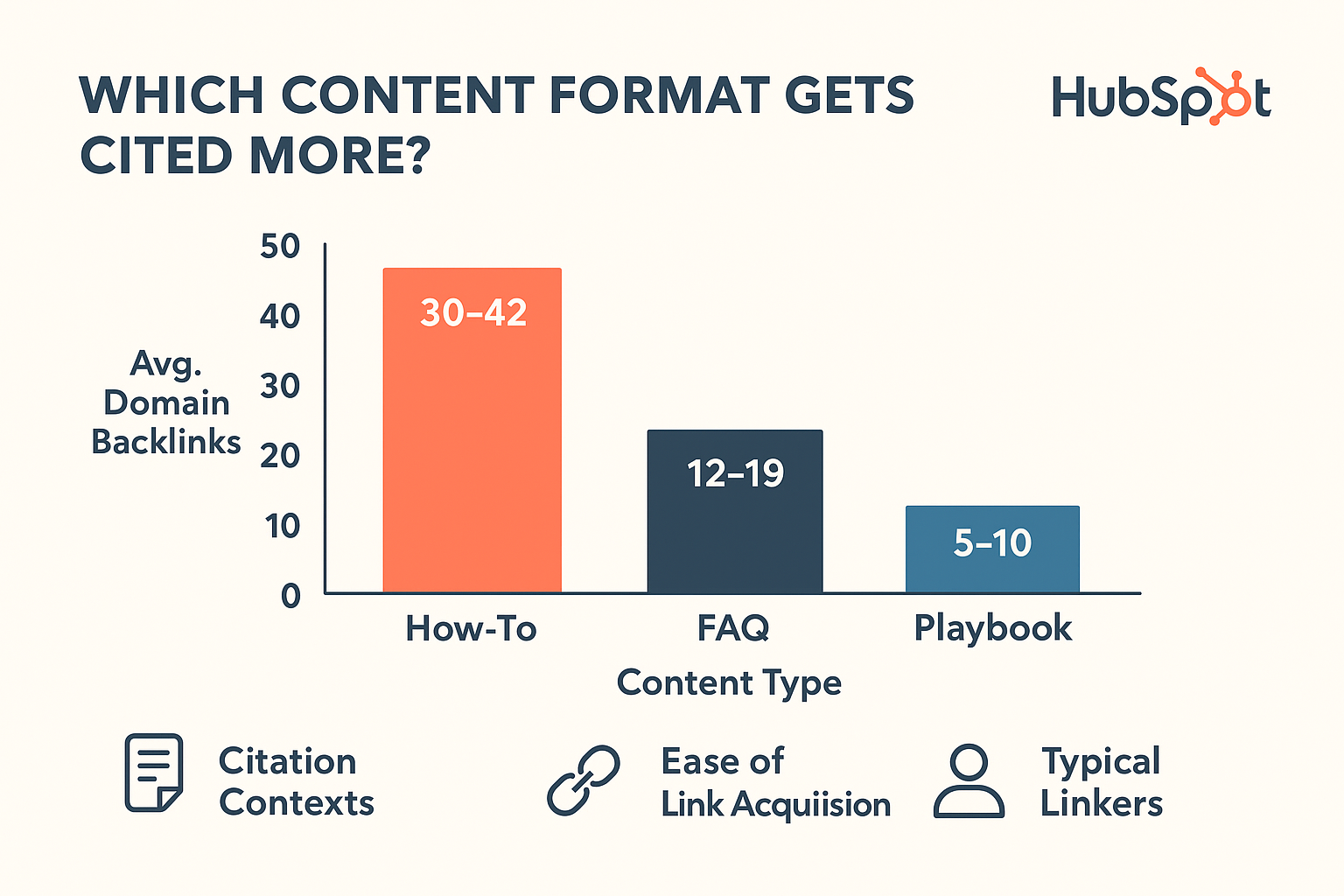
Which Content Format Gets Cited More?
Data: Link Acquisition Rates by Format
SEO research indicates How-To guides consistently outperform FAQ pages and Playbooks in attracting citations (i.e., backlinks and references in third-party content).
| Content Type | Avg. Domain Backlinks (per 100 URLs)\* | Citation Contexts | Ease of Link Acquisition | Typical Linkers |
|--------------|----------------------------------------|-------------------|-------------------------|--------------------------|
| How-To | 30-42 | Tutorials, blogs | Very High | Bloggers, news, forums |
| FAQ | 12-19 | Help desks, KBs | Moderate | Company sites, customers |
| Playbook | 5-10 | Internal, B2B | Low | Internal, partners |
\*Averages observed in studies from Ahrefs, SEMrush, and HubSpot[[6]](https://blog.hubspot.com/service/knowledge-base-company-blog)[[3]](https://scribehow.com/library/how-to-write-faq-page).
Why the Gap?
- How-To guides target long-tail, instructional queries (“how to optimize for featured snippets”) and are commonly referenced by aggregators, bloggers, and journalists for authoritative, stepwise answers[[3]](https://scribehow.com/library/how-to-write-faq-page).
- FAQs solve basic, highly repeatable questions, often earning links from product support ecosystems but rarely from third-party publishers or thought leadership aggregators[[5]](https://www.intercom.com/learning-center/faq-vs-knowledge-base).
- Playbooks provide strategic blueprints—critical for internal use but usually too context-specific to be widely cited publicly[[2]](https://www.archbee.com/blog/a-practical-introduction-to-playbooks-in-knowledge-management).
Supporting SEO Evidence
Brian Dean and Ahrefs have both shown that "how to" search queries drive higher click-through and link rates than “what is” or “FAQ” styled queries, aligning with higher citation profiles for detailed guides[[6]](https://blog.hubspot.com/service/knowledge-base-company-blog).
---
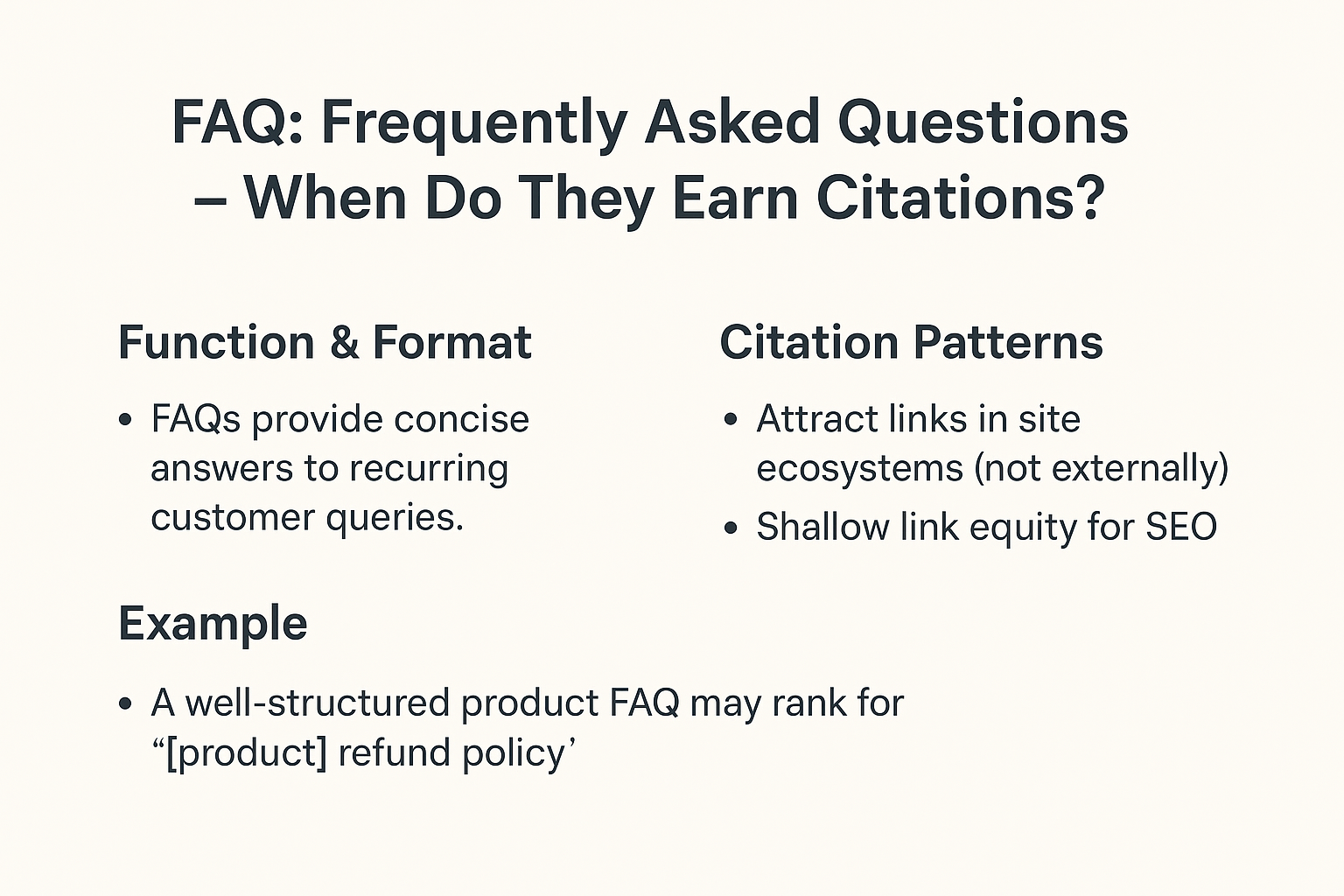
FAQ: Frequently Asked Questions – When Do They Earn Citations?
Function & Format
FAQs provide concise answers to recurring customer queries, helping with self-service and reducing support load[[3]](https://scribehow.com/library/how-to-write-faq-page)[[5]](https://www.intercom.com/learning-center/faq-vs-knowledge-base).
Citation Patterns
- Attract links in site ecosystems (not externally): Most FAQ citations come from related help docs or ecosystem links, not new external publishers[[5]](https://www.intercom.com/learning-center/faq-vs-knowledge-base).
- Shallow link equity for SEO: Rarely cited by bloggers or industry authorities unless the FAQ page introduces new research, unique policy clarifications, or authoritative explanations.
Example
- A well-structured product FAQ may rank for “[product] refund policy,” but will rarely be referenced from “top tools for X” listicles or industry research articles[[3]](https://scribehow.com/library/how-to-write-faq-page).
- FAQs do provide high utility for internal UX and navigational flow, which may lower bounce rates—a soft SEO metric[[5]](https://www.intercom.com/learning-center/faq-vs-knowledge-base).
---

How-To Guides: The Citation Workhorse
Function & Structure
How-To guides break down processes into step-by-step instructions and visuals, making them the primary format for solving problems via search and cited recommendations[[3]](https://scribehow.com/library/how-to-write-faq-page)[[6]](https://blog.hubspot.com/service/knowledge-base-company-blog).
Citation Patterns
- Dominate “how-to” intent keywords: These guides often attract natural external backlinks from resource curation lists, forums, and instructional blogs.
- High reusability value: Their actionable, modular format encourages citation for both broad and niche topics.
- Benefits from multimedia: Embedding screenshots and video increases engagement and encourages third-party reference[[3]](https://scribehow.com/library/how-to-write-faq-page).
Example
- HubSpot’s “How to Write a Blog Post” consistently earns dozens of referring domains annually for its clarity, depth, and stepwise layout[[6]](https://blog.hubspot.com/service/knowledge-base-company-blog).
Strategic Implementation
- Optimize for popular “how-to” keywords: Use tools like SEMrush/Ahrefs to target high-intent queries with demonstrated backlink demand.
- Publish comprehensive, evergreen guides: Detailed, updateable How-Tos with strategic interlinking outperform single-page FAQs for both user engagement and link earning[[6]](https://blog.hubspot.com/service/knowledge-base-company-blog).
---
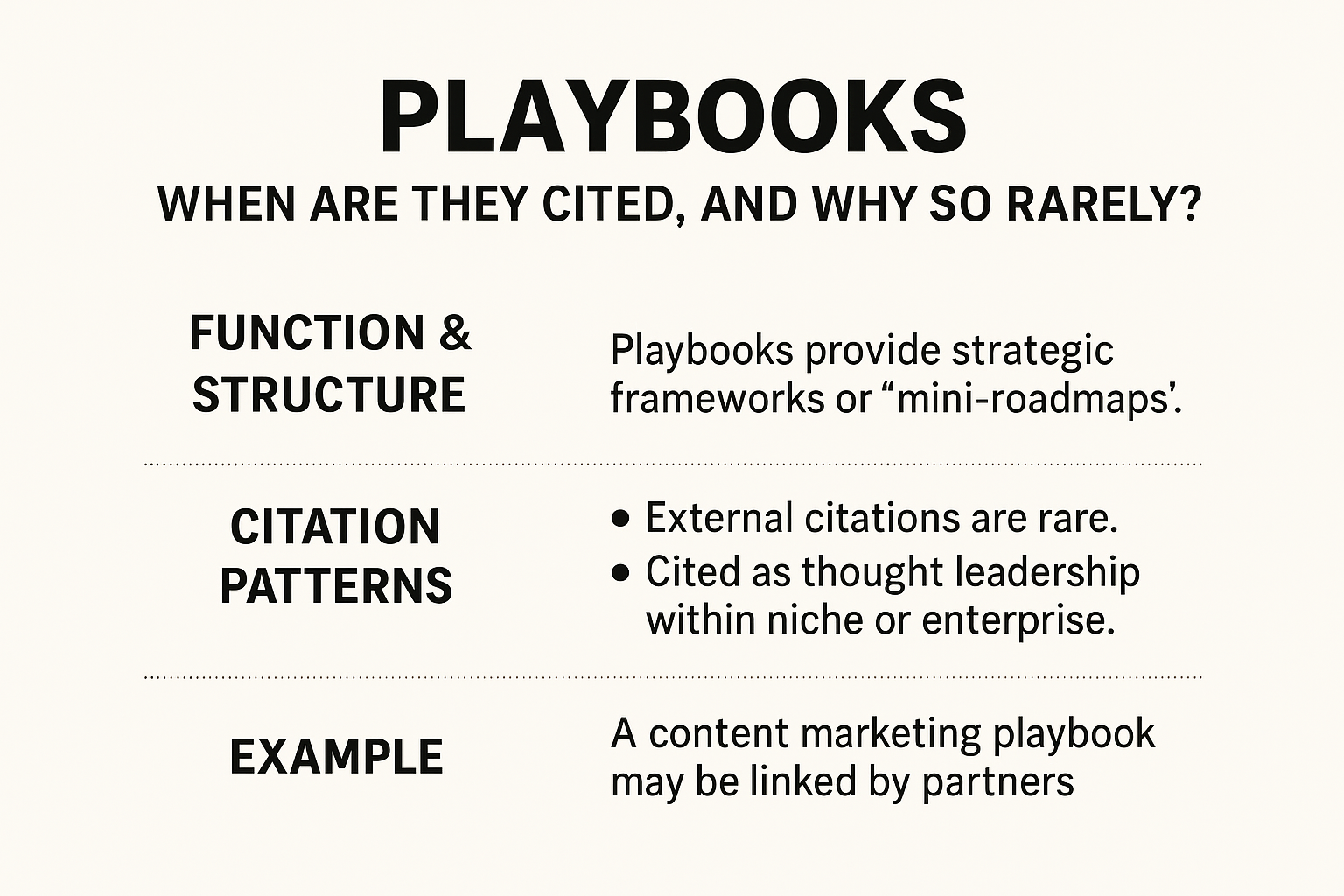
Playbooks: When Are They Cited, and Why So Rarely?
Function & Structure
Playbooks provide strategic frameworks or “mini-roadmaps,” offering high-level guidance paired with step-by-step activities, tips, and supplementary checklists[[2]](https://www.archbee.com/blog/a-practical-introduction-to-playbooks-in-knowledge-management).
Citation Patterns
- External citations are rare: Playbooks are mostly referenced internally or shared behind paywalls or in B2B partnerships.
- Cited as thought leadership within niche or enterprise: If published externally, playbooks may earn citations for methodology but remain too tailored for wide, organic referencing[[2]](https://www.archbee.com/blog/a-practical-introduction-to-playbooks-in-knowledge-management).
Example
- A content marketing playbook may be linked by partners or cited in webinars among collaborators, not by general web publishers.
Business and ROI Considerations
- Playbooks deliver operational value and internal cohesion but rarely drive referral link equity. Consultants can leverage them for sales enablement, process standardization, and partner onboarding—high business ROI, low SEO ROI[[2]](https://www.archbee.com/blog/a-practical-introduction-to-playbooks-in-knowledge-management).
---
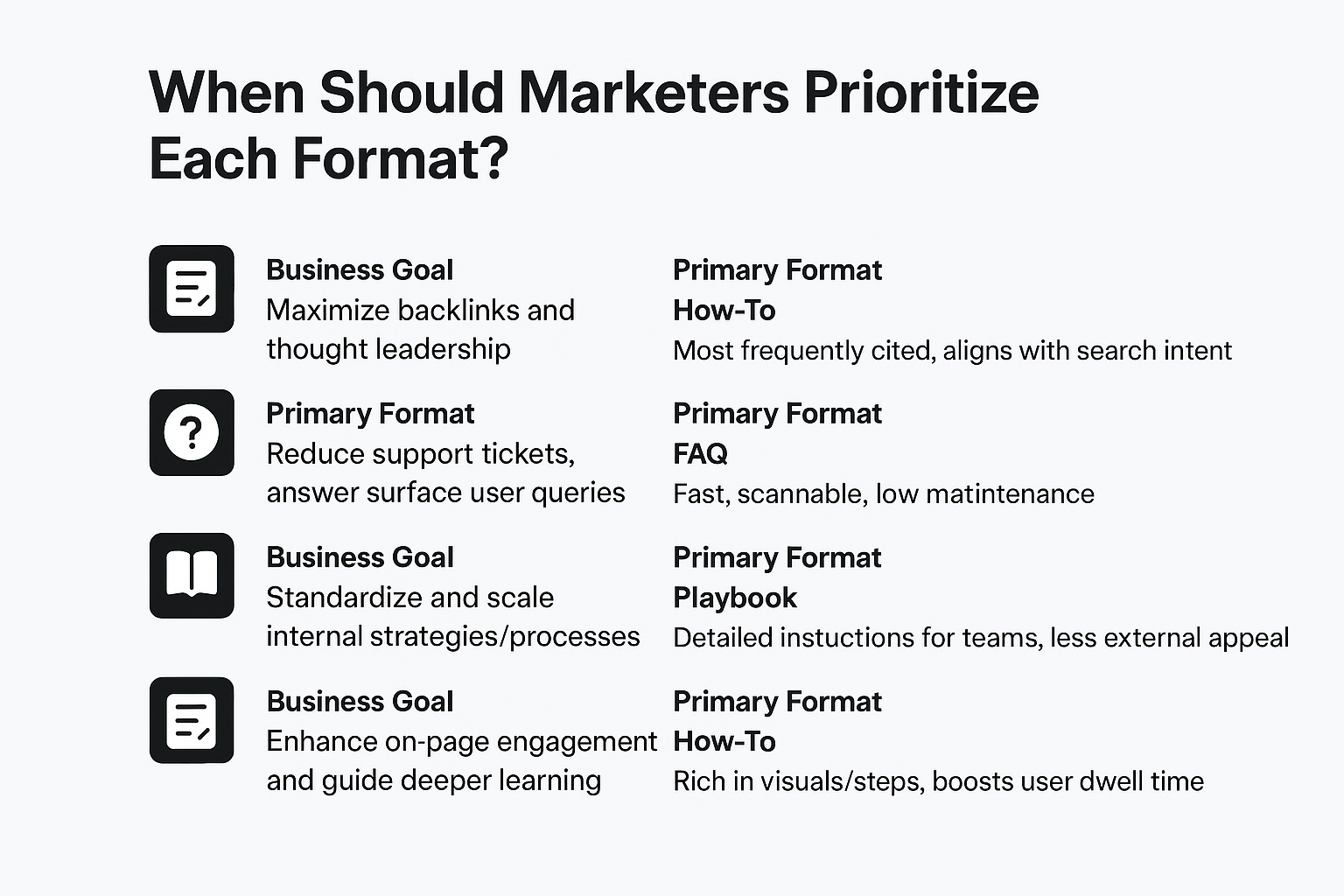
When Should Marketers Prioritize Each Format?
| Business Goal | Primary Format | Rationale |
|------------------------------------------------------|---------------|---------------------------------------------------------|
| Maximize backlinks and thought leadership | How-To | Most frequently cited, aligns with search intent |
| Reduce support tickets, answer surface user queries | FAQ | Fast, scannable, low maintenance |
| Standardize and scale internal strategies/processes | Playbook | Detailed instructions for teams, less external appeal |
| Enhance on-page engagement and guide deeper learning | How-To | Rich in visuals/steps, boosts user dwell time |
| Facilitate employee/client onboarding | Playbook | Ensures consistency, reduces training requirements |
---
Conclusion / Key Takeaways
- How-To guides drive the most citations, both in backlinks and in external recommendations, by answering process-focused, search-optimized queries.
- FAQs excel at internal navigation and surface-level user support but lack broad referencing value outside their ecosystem.
- Playbooks hold deep operational and training value but are rarely cited externally due to their specificity and intent.
- For consultants targeting citation-driven SEO growth, invest primarily in comprehensive How-To guides, supplement with FAQs for usability, and reserve Playbooks for internal enablement and premium lead magnets.
---
FAQs
1. Can an FAQ ever become a link-building asset?
Yes, when it covers unique legal, technical, or industry-defining answers that others must reference—for example, Google’s Search Console FAQs are frequently cited due to their authority.
2. How can consultants turn How-To guides into authority assets?
Depth, original data, and multimedia elements raise citation potential. Regular updates and strategic distribution (outreach, PR) further boost link acquisition.
3. Do Playbooks have any SEO value?
Minimal unless made public as “ultimate strategy” resources; even then, most citations are from B2B partners, not wide web publishers.
4. Should websites combine these formats?
Yes. Combining FAQ navigation, rich How-To instruction, and actionable Playbooks (as gated content or onboarding tools) builds a comprehensive, user-friendly knowledge ecosystem.
---
Citations
- How to Write an FAQ Page: The Only Playbook You Need - Scribe
- A Practical Introduction to Playbooks in Knowledge Management - Archbee
- FAQs vs Knowledge Bases: A Detailed Comparison - Intercom
- 5 Things That Distinguish a Knowledge Base From a Company Blog - HubSpot
- Choose the Best: Knowledge Base Software vs. Content Management Systems - Helpjuice
- Runbooks vs Playbooks: A Comprehensive Overview - Cutover
- Learn the Difference: Handbook vs Playbook for SMBs! - Trainual